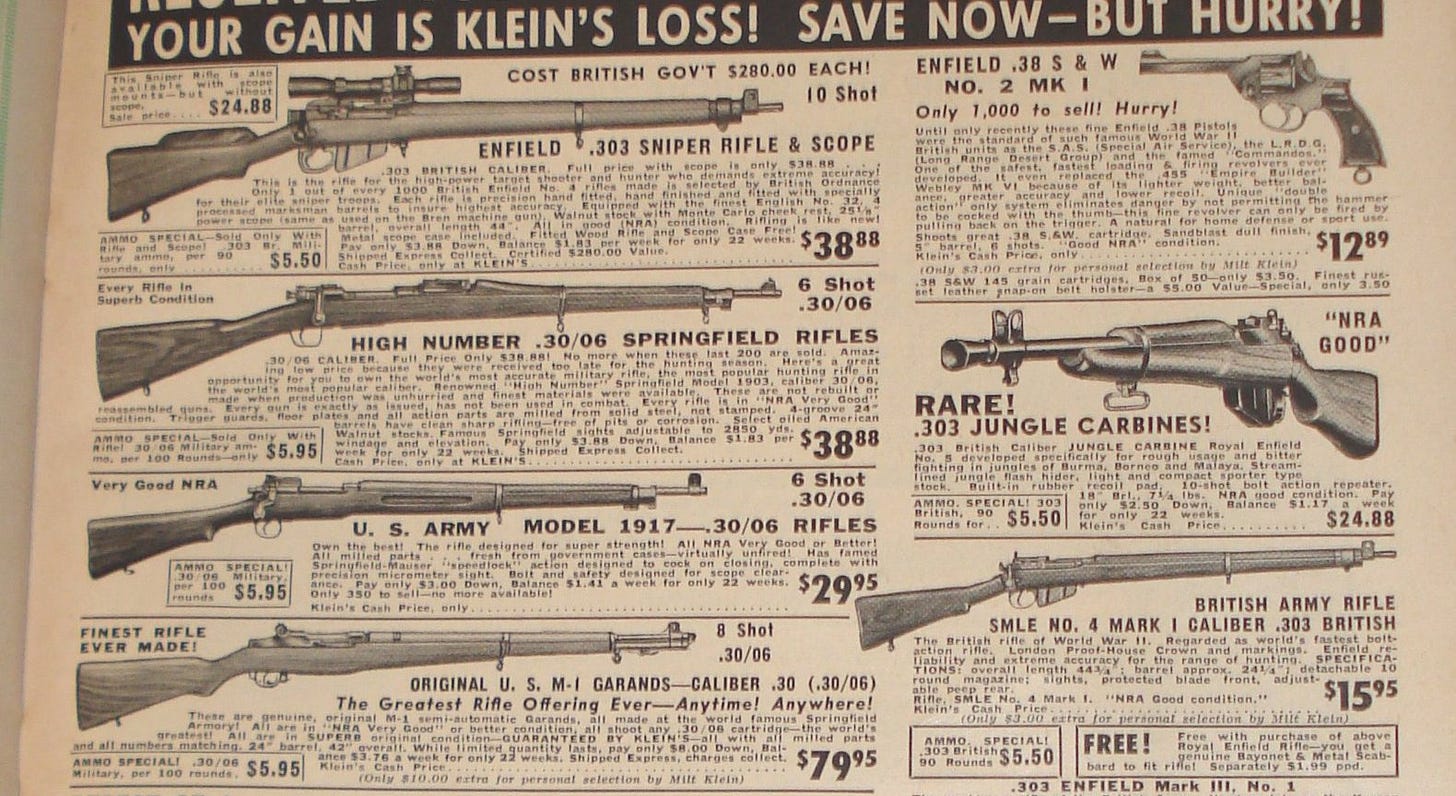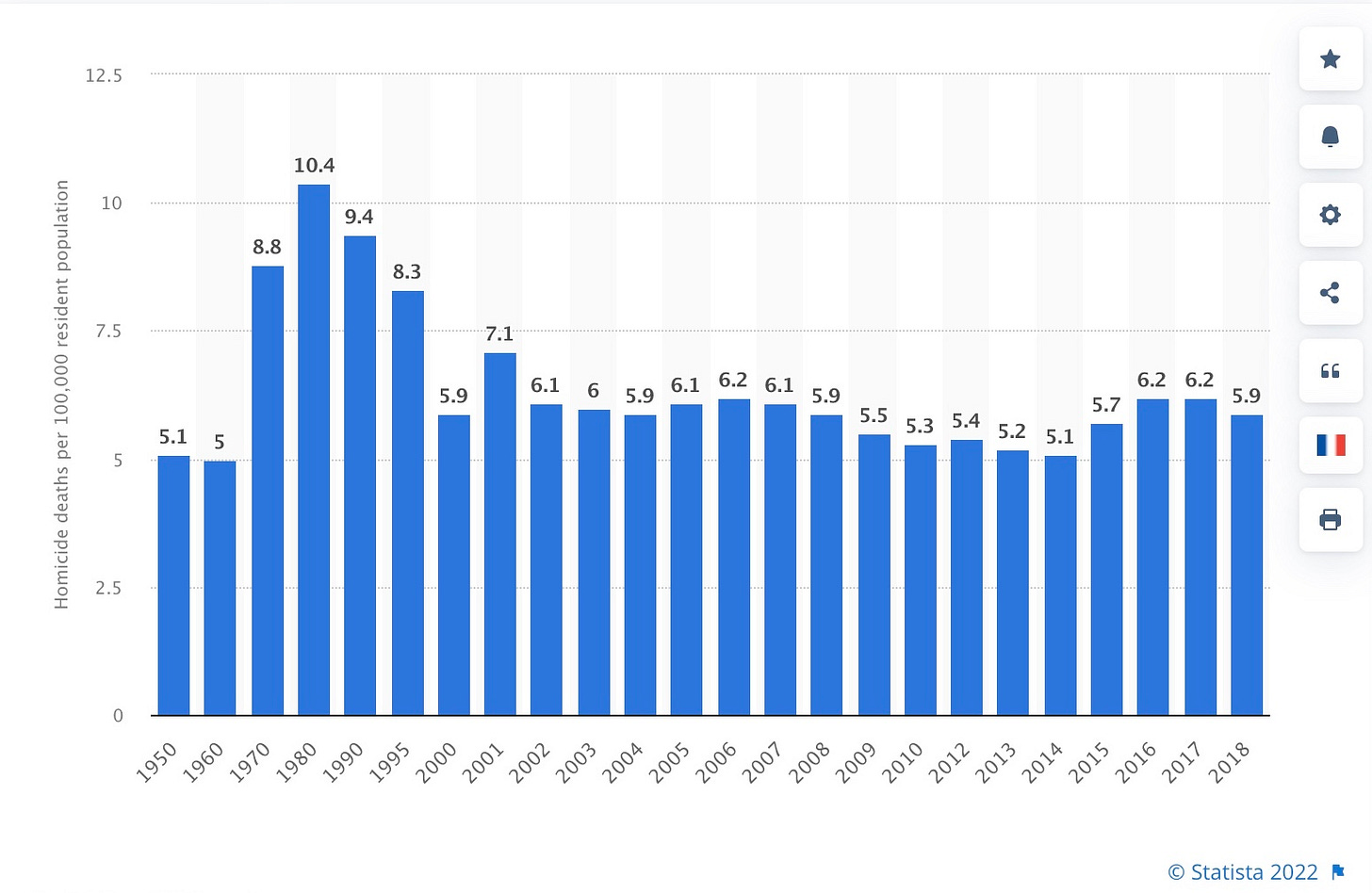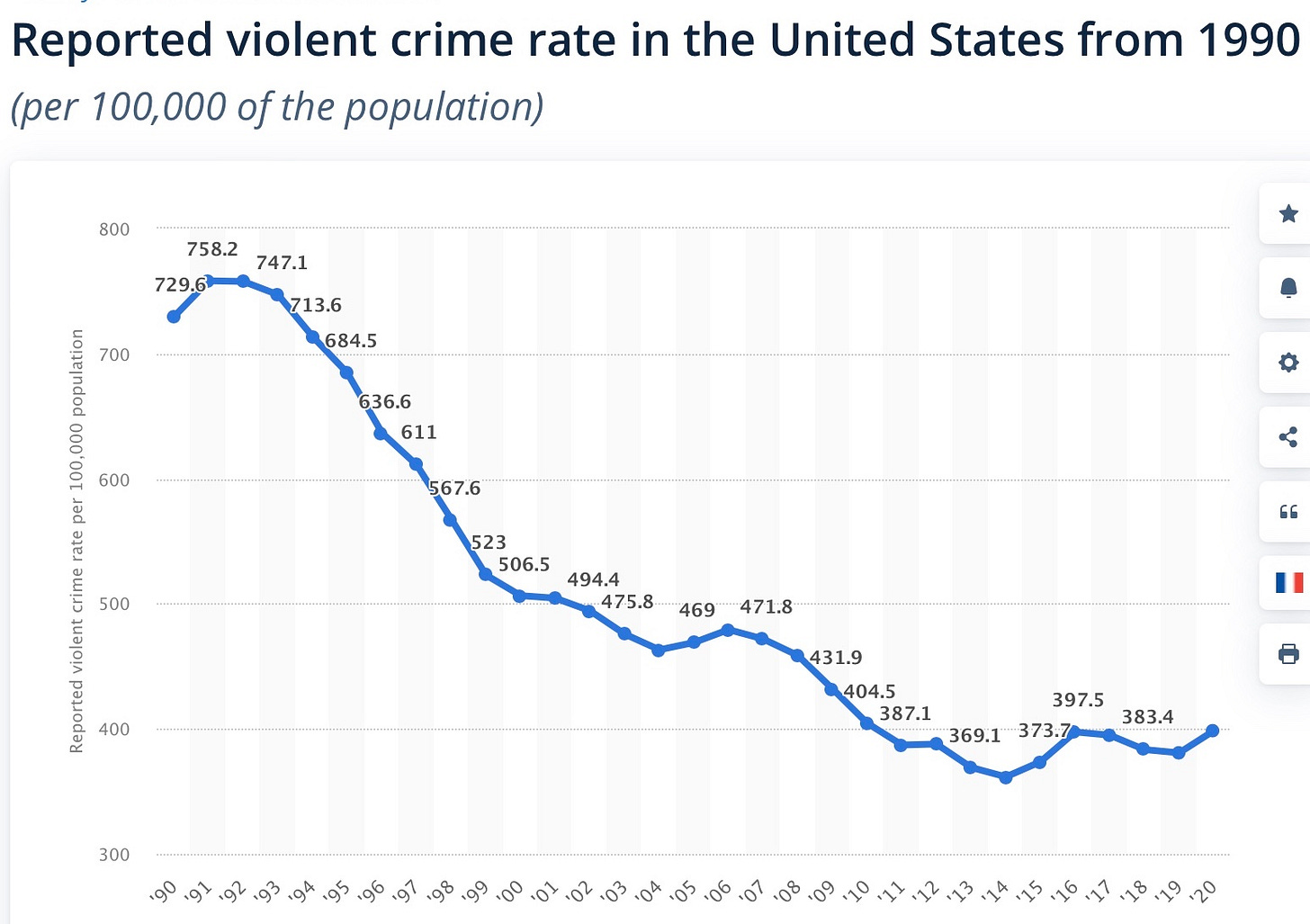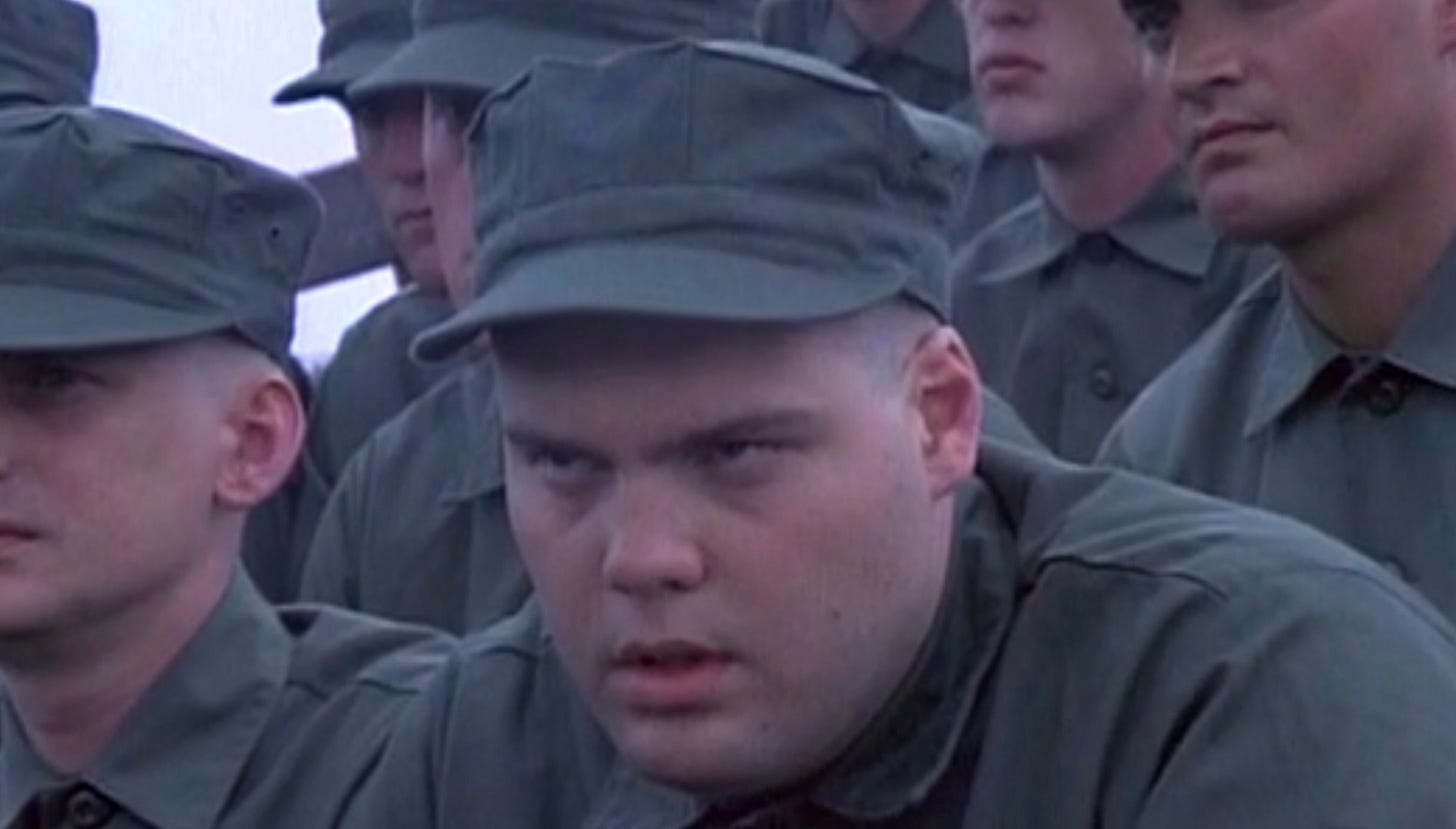As the fog of the moment clears from the Uvalde, TX mass shooting, I find myself asking "what has changed, that young men are more prone to committing such violence?" It is quite clear that something must have, because tools with which to commit such atrocity have been available for many decades, yet the epidemic of mass shootings is much more recent, and seems to have begun with 1999's Columbine massacre.
Semi-automatic rifles functionally identical to those used by the Uvalde murderer have been widely available to the public since WWII, at least, and purchasable by mail order, with no background checks or other restrictions, from the late 1940s through the late 1960s (in the interest of brevity, I won’t deep-dive into the myriad misconceptions and outright lies regarding “assault weapons” here. Read my Gun Rights Series if you want to know more).
Other firearms were also widely available, both legally and illegally (inner cities of the 1970s were awash in "Saturday Night Specials"). The US homicide rate, flat from 1950 through the mid 60s, accelerated sharply from the late 60s through a peak in 1980, before starting a steady decline hence. The nation returned to that 1950s rate in the late 2000s, with a small increase in recent years breaking the trend.
The number of guns in America has increased steadily across that time span, from 50M in 1945 to over 400M today. The right to carry a concealed firearm is now the baseline for 75% of the nation's populace, and the four decade decrease in crime rates has correlated with the proliferation of right-to-carry laws that began in the 1980s.
You wouldn't know it from the news, but barring the recent increases (easily attributable to policy changes that let many crimes go unpunished), crime has been in steady decline in the US since the Reagan era.
The aberration and outlier in this trend is the phenomenon of the mass shooter. With a specific emphasis on school mass shootings perpetrated by young men (it is worth noting that perpetrator demographics vary widely, as a perusal of this list illustrates, but the 'disaffected teen' is the standout worth pondering).
In Stanley Kubrick's seminal war movie Full Metal Jacket, Gunnery Sergeant Hartman instructs his trainees:
Your rifle is only a tool. It is a hard heart that kills.
What hardened the hearts of such as the Uvalde and Buffalo shooters?
Even as it grows more likely that some form of federally imposed gun restriction will be enacted in the wake of the two most recent "teen with a gun" massacres, it is vital we consider that attempting to restrict the tool without addressing the heart will probably be an exercise in futility.
Unfortunately, these shootings are, I'm concluding, a product of our culture's recent "progress." That progress has been one of divisiveness rather than unification. Zero-sum oppressor-victim math rather than synergistic comity. The infantilization of young adults. The politics of blame. The "unmanning" of boys. The elimination of free-play in favor of helicopter parenting and endless structure. The original-sin messaging of race essentialism and Critical Race Theory. And the rest of the rapidly metastasizing progressive subsuming of what used to be a "be nice to everyone and try to find your own happiness" goal.
This rapid cultural metastasis stands atop decades of familial decay. I am very, very far from being a traditionalist, but the deleterious effects of the breakdown of the nuclear family model cannot be denied. A friend who has spent half a lifetime helping people in poor communities offers a constant plea:
Men, marry your baby mamas.
Author Adam Coleman offers a similar observation:
[W]hat happens when there is no father in a child’s life? What happens to those boys when their compass is nowhere to be found? They all too often become lost boys and grow into lost men.
About 25% of children in America are growing up in single-parent households — three times the rate in 1960 — the majority of whom lack daily interactions with their fathers (if any at all).
Social media magnifies the deleterious effects of all this. It facilitates "othering" and depersonalization, it removes the instant feedback that socializes young people, it offers toxic substitutes for that which is absent from a young person’s life, and it makes it easier for the marginal to find that which feeds their anger.
The news, always desperately thirsty for eyeballs, grants notoriety to the worst of the worst, inspiring other teetering minds to copycat violence and resultant infamy.
But, I want to emphasize - these are magnifiers, not sources. The seeds of hardness and hate are cultural. Their sowers happen to also be the ones who insist that restricting the tools, rather than addressing the hard hearts, will remedy this problem.
This means the problem won't get solved. The cultural sickness that's producing these monsters will continue, because even suggesting that the Left's illiberal ideas and ideologies are to blame is to invite personal attack and overwrought outrage.
So, I expect that we will see some sort of restriction on the gun rights of 18-21 year olds, as a "do something!" remedy, facts and realities notwithstanding. Then, when some creative psychopath subverts that restriction, we'll see demands for more. Again, with no acknowledgment of culpability in creating these monsters.
This raises a broader question, and points at a broader phenomenon: the aforementioned infantilizing of our young adults. Our "age of majority" is 18: old enough to join the military, to vote, to sign binding contracts, to assume financial obligations and debt. Not old enough, though, to buy alcohol or tobacco. And, we are now hearing, not old enough to understand that student loans are an obligation and responsibility. What's it to be, then? If 18 year olds can’t be trusted to behave like adults, we should stop granting them the rights and privileges of adulthood.
On top of it all, we have the COVID lockdowns. The harm being done to a couple generations of America's young is going to echo for decades, and it will continue unless and until we, as a society, admit to causing it.
A friend shared this worthwhile article as I was putting this one to bed. The remedy therein is one of improved treatment, rather than underlying causes, but the point is the same - there’s a sickness herein that isn’t being acknowledged.
If you enjoy The Roots of Liberty, please subscribe (if you have already, thank you!), and please recommend the blog to your friends! While I share it as much as I can on social media, subscribing ensures you won't miss a post.
If you really like The Roots of Liberty and want to help keep it rolling, please consider becoming a paying subscriber here at Substack, or at a lighter level as contributor to the blog via Patreon.
Thank you for your support!
Yours in liberty,
Peter.









You read my mind. I was thinking of the societal delaying of adulthood as being related to the 18 year olds who cannot handle themselves. I didn’t think of the absent father aspect, but that is another good point.
One of your best.